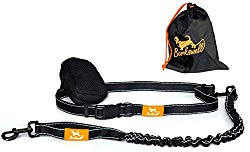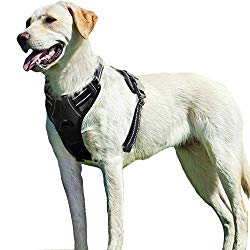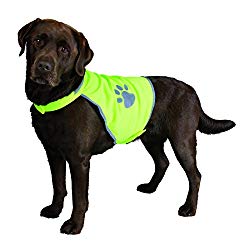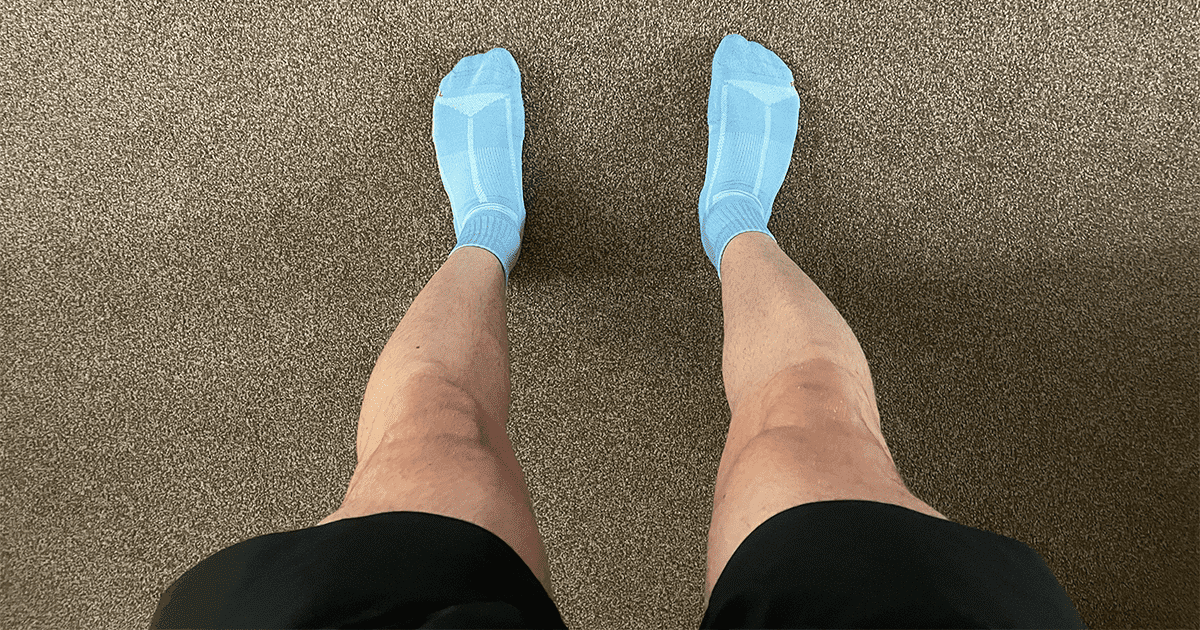Running with your dog: the ultimate guide
Running with your dog can be great fun, as long as you do it right! Here’s everything you need to know.

Running with your dog is a great way to keep your running fun while bringing along and exercising your four-legged friends. There are often a handful of questions that get thrown around when talking about running with a dog, therefore, we’ve put together this guide. From how to start running with your dog to essential gear, here’s what you need to know.
Is it okay to take my dog running?
Yes! Dogs require daily exercise for their health and happiness, much like ourselves. Including as little as two runs a week with your dog is a great way to start, heck it may encourage you to run that little bit more!
However, how often you run with your dog is dependant on their breed, this will be discussed in further detail shortly.
How do I start running with my dog?
Before running with your dog, you want to make sure they’re almost fully grown. For the majority of dog breeds, this is around nine months.
However, bigger dogs such as German Shepherds can take longer than one year and up to two. Running with a dog which is not yet fully grown may damage the dog’s musculoskeletal system, therefore, increasing the chance of developing conditions such as dysplasia.

Likewise, you should also head for long walks before heading for your very first run. Petmd mentions these long walks to build up the necessary muscles and energy requirements for running. Once you and your four-legged friend are happily plodding along these long walks, it’s time to take it up a notch.
Start incorporating short sprints every ten-minutes or so within your walk, this will further develop and prepare both you and mainly your dog for the intensity of running which is to follow.
Once comfortable, and there is little to no sign of fatigue it is safe to start taking your dog on short runs, to begin with.
These runs should last anywhere from ten-minutes to thirty-minutes, gradually building up over time. However, it is important to put the dog’s health and wellbeing first – as I’m sure you’re aware. Therefore, if you notice any unusual signs of fatigue it’s best to call it a day and let the little fellow sit it out for a while.
[click_to_tweet tweet=”Want to start running with your dog? Running101 suggests long walks, to begin with, then slowly incorporating sprints every ten-minutes or so to develop the necessary muscle and energy requirements for running #running #runningwithadog #dogs #fitness” quote=”Want to start running with your dog? Running101 suggests long walks, to begin with, slowly incorporating sprints every ten-minutes or so to develop the necessary muscle and energy for running #running #runningwithadog #dogs #fitness” theme=”style3″]How often should I run with my dog?
This ultimately depends on the dog. There are three considerations we must take into account when discussing how often you should be running:
1. Age
Running with too young of a dog (as previously discussed) may stunt the dog’s growth or lead to conditions such as dysplasia. Likewise, running with a dog who is considered too old may develop further muscle and or joint strain. Therefore, it’s important to find the right balance. If unsure, we recommend getting a vet-checkup and knowing for certain.
2. Size
Much like age, the size of your dog is also extremely important when debating how often to run with them. Smaller dogs will generally be less inclined to go for a run, whereas much larger and leaner dogs are well suited for the challenge. This is because smaller dogs have to work much harder to keep up (they only have small legs!).
3. Breed
The final consideration when discussing how often to run with your dog is the dog breed. Different dog breeds have different energy levels and capabilities, just like beginner runners and those who have ran for years. For example, you’ll most likely never run a 10k with a pug although with a dog such as a labrador or german shepherd you’d be able to cover more than double that distance.

On a final note, it is especially important to pay attention to your dog when out on the run. If lacking in energy, excessively panting, or generally not acting themselves, it is best to leave the lead at home and hit the roads yourself – at least for a while.
How to stay safe while running with your dog
There are many different safety considerations to be wary of when running with your dog. From protecting them from the heat to watching out for broken glass, here’s what you need to know.
1. Would you run in a fur coat?
As I’m sure you’re aware, dogs have fur coats. However, when running this means they get much hotter much quicker than we do. Therefore, as a general rule of thumb, if the temperature is above 25 degrees (Celsius) or very humid, it is advised to leave your dog at home.
2. Dogs are too loyal!
It’s a common fact that dogs are loyal to their owners. However, for running, this can often be detrimental to their health. This is because dogs will push through exhaustion and the heat, putting themselves in danger.
It is, therefore, essential to monitor your dog for any signs of fatigue before, during, and after your run.
3. Dogs don’t own shoes
Although it sounds obvious, dogs don’t own shoes. When running be cautious of any broken glass, sharp stones, rubbish and of course the terrain you are running on.
4. Keep the lead
Although many dog owners will disagree, keeping your dog on the lead is the safest option when running with your dog. Not only will this prevent them from taking off, but this will also allow you to navigate out the way of any cyclists, other dogs, small children, and any other obstacles you may face.
Keeping your dog on a lead is also considerate to those around you and other dog owners. Imagine being chased by a German Shepherd while on your morning stroll, even if they don’t mean any harm – don’t be that guy.
5. Build up your dog’s endurance
As we mentioned previously, it’s important to gradually build up your dog’s endurance. To begin with, we recommend running no longer than ten to thirty-minutes at a time. Over time, this can be gradually increased with many further distances able to be covered safely.
One method of building up your dog’s endurance, as recommended by The American Kennel Club is slowly incorporating small segments of running into your long walks. Over time, reduce the walking portion and increase the time spent running. After several weeks of doing this, your dog will most likely be able to run much further than they could have towards the beginning of their running journey.
6. Keep your dog hydrated
Just like us, dog’s must stay hydrated! Ensure to give your dog water before, during (if needed), and after your run. Dog’s sweat more than humans due to their fur coats, therefore, meaning they need more water.
Adjust to your dog’s breed and ability
Depending on the breed of your dog will determine how far, fast, and how often they can run. Larger dogs such as German Shepherds and Labradors can cope with a much higher running intensity compared to pugs and sausages dogs.

Much like the dog’s breed, it is essential to adjust your running speed and distance to their ability. Some dogs will have much more energy and be able to keep up with speeds as high as 7:00 per mile, whereas others may be more suited to 9 or even 10 minutes per mile.
Whatever your dog’s breed or ability, it is crucial to monitor for any signs of fatigue before, during, and after your run. Make adjustments based on their needs, you can speak, they can’t.
What gear should you bring when running with your dog?
There are many different gear options to make both you and your dog’s life easier on the run, from leads with reflective materials to harnesses, we discuss the essentials.
1. Running lead
One option you may want to invest in as a proper running dog lead. We recommend the barkswell running dog lead. This allows plenty of slack, contains a zipped pouch (perfect for keeping poo bags), and even includes reflective material – essential for running in darker conditions.
Likewise, more and more dog owners are beginning to use glow in the dark dog collars – further increasing visibility from ongoing traffic and other road and/or path users.
This post contains links to amazon. As an amazon associate, we will earn a small percentage on qualifying purchases. Find out more here.
Key features:
- Reflective trim on the belt to keep your dog well-lit
- Zipped pouch with two compartments
- Holds up to 60kg
2. Harness
Running with a dog on a lead places strain on the dog’s neck, while also being prone to slipping off. Running with a harness transfers the load to the dog’s chest, allowing them to be much more comfortable and leaving you in complete control while running.
Key features:
- Easy to adjust
- No-pull front clip
- Distributes pressure evenly to increase comfort
3. Collapsible water bowl
When running in the heat, (remember no hotter than 25 degrees Celsius) bringing a collapsible water bowl can help keep your dog hydrated, healthy and happy. We suggest the COTOP portable dog water bottle. This is portable, convenient, and easy to use – providing your dog with fresh water during your run.
Key features:
- Holds up to 350ml of water
- Leakproof
- Portable and convenient
4. Trixie dog safety vest
You can’t go wrong with a safety vest. Not only is it adorable, but this highly-reflective design is great for increasing visibility, especially important when running at night or in dark conditions.
Key features:
- Highly-reflective design
- Comes in many different sizes
5. Poo bags
Most notably, be sure to bring a couple of poo bags whenever you head out the door for a run with your dog. Always bring more than one, it’s better to be on the safe side. These can be stored in the zip section of your running lead (like the one we suggested).
Related: Running with your dog, 8 must-have pieces of gear.
How many miles can I run with my dog?
We have briefly touched on this; however, this entirely depends on the dog’s age, size, and breed. Many dogs are capable of running up to 25-35 miles per week. However, this must be built up over a long period of time.
The younger, older, and smaller the dog generally means the fewer miles you’ll want to cover. Be sure to research your dog breed beforehand, crucial towards protecting your dog’s health.
Be mindful of your run
When running with your dog expect to stop multiple times, whether this is to sniff a bush, mark their territory or god forgive if they’re making you use them poo bags. When running intervals, or faster running, in general, it is advised to leave your dog at home. If you are wanting to run with your dog on your interval day, you could perform either your warmup or cooldown with them instead.
The bottom line
Running with your dog is a great way to save time, destress, and spend even more time with your best friend. However, before beginning to run it’s important to ensure the dog breed is well-suited to running, starting off with long-walks and slowly implementing short bouts of running, gradually increasing this over time.
Finally, always prioritise their safety when running with your dog, constantly monitoring them for any unusual signs of fatigue.
Running with your dog FAQ
Can a dog run a marathon?
Yes, however, this depends on the dog breed and experience running. We recommend having a vet-check-up first, as well as plenty of serious training before giving it a go. Remember, you wouldn't run a marathon on no training so don't put your dog through it.
Is it okay to run with your dog?
Yes! Dogs require daily exercise for their health and happiness, much like ourselves. Including as little as two runs a week with your dog is a great way to start, heck it may encourage you to run that little bit more! However, how far you should run depends on the breed, with breeds such as Siberian huskies and labradors much more suited to running long distances than say pugs or terriers.
Can you over-exercise a puppy?
Yes, puppies need much less exercise than fully grown dogs. Therefore, it's best to leave the running for now or instead stick to short ten-minute bouts. Over-exercising a puppy, including walking, may stunt the dog's growth, damaging it's joints and even leading to conditions such as dysplasia.
Do dogs need rest days from running?
Yes, we recommend providing at least one or two rest days per week with no running or walking whatsoever. This is especially important if your dog is on the younger side, or you've just started running together. Running and walking too often may lead to further problems for your little canine friend down the line.

Matthew is a lifelong runner, chief tester of all products, the founder of Running101, and freelance content writer for active brands. When he’s not writing, he enjoys lifting weights, cycling in the Lake District, and watching fast cars drive in circles on a Sunday. He also has a BA in sport, exercise and physical activity from the University of Durham.








